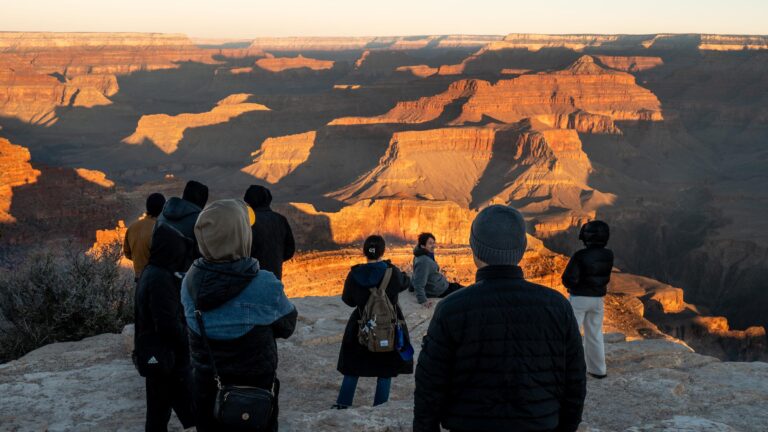San Diego’s vital tourism industry faces a potential setback amid declining visitor numbers to the United States, a trend widely dubbed the “Trump slump.” According to recent reports, the slump-attributed largely to policies and rhetoric from the Trump administration-has already begun to strain local businesses that depend heavily on international and domestic travelers. As the city braces for the possible economic impact, stakeholders are calling for renewed efforts to restore San Diego’s appeal as a premier travel destination.
Trump Slump in U.S. Travel Poses Significant Threat to San Diego Tourism Economy
The slowdown in international travel to the United States, often referred to as the “Trump slump,” has raised alarms among San Diego’s tourism industry. With foreign visitors accounting for a significant portion of the city’s travel economy, any reduction in arrivals directly impacts local businesses, from hotels to restaurants and attractions. Industry experts warn that a continued dip could stall recent economic growth, undermining job creation and tax revenues vital to the region’s stability.
Key sectors most vulnerable include:
- Hospitality services: Reduced hotel bookings and cancellations threaten occupancy rates.
- Transportation: Decreased demand for car rentals, taxis, and airport shuttles affects revenue flows.
- Entertainment venues: Lower attendance leads to scaled back events and activities.
| Economic Indicator | Pre-Slump 2016 | 2023 Projection |
|---|---|---|
| Tourist Arrivals (millions) | 4.8 | 3.9 |
| Hotel Occupancy Rate (%) | 82 | 70 |
| Tourism Revenue ($ billions) | 5.3 | 4.1 |
Impact of Declining International Visitors on Local Businesses and Employment
Local businesses in San Diego face mounting pressure as the sustained decline in international tourism disrupts traditional revenue streams. Hotels, restaurants, and retail shops, which heavily rely on cross-border travelers, are witnessing sharp downturns in customer volume. Small businesses that serve airborne visitors particularly experience dwindling foot traffic, leading to tighter profit margins and strained operational capacities. This slump not only curtails daily sales but also fragments the entire supply chain, affecting wholesalers and service providers connected to the hospitality sector.
The employment landscape shows visible cracks, with layoffs and reduced staffing hours becoming more common as companies scramble to align labor costs with softened demand. The ripple effect threatens a wide spectrum of jobs, from front-line customer service roles to seasonal employment opportunities typically filled by local youth and students. Below is a snapshot of recent employment impacts in key tourism sectors:
| Sector | Job Loss Rate (%) | Revenue Drop (%) |
|---|---|---|
| Hospitality & Hotels | 18 | 25 |
| Food & Beverage | 12 | 20 |
| Retail | 10 | 15 |
- Reduced hiring: Seasonal positions waning as businesses cut back.
- Supply disruptions: Local vendors facing cuts due to lower tourist demand.
- Economic uncertainty: Investment hesitation in new tourism-related ventures.
Strategies for San Diego to Counteract Negative Travel Trends and Boost Visitor Numbers
San Diego’s tourism industry can adopt a multi-faceted approach to offset declining travel interest and maintain its position as a top destination. Investing in targeted international marketing campaigns that emphasize the city’s cultural diversity, natural beauty, and world-class attractions can rekindle interest among key overseas markets. Collaboration with airlines and travel platforms to offer competitive package deals and flexible options may also stimulate bookings, especially from hesitant travelers. Additionally, enhancing the visitor experience through localized events, improved infrastructure, and personalized digital services will further incentivize repeat visits and positive word-of-mouth.
Local stakeholders are considering several strategic initiatives, including partnerships with major festivals and sports franchises to draw year-round crowds. Early data from pilot programs suggest that combining destination branding with seasonal promotions can effectively counterbalance seasonal tourism troughs. Below is an overview of proposed actions and their potential impact on visitor numbers:
| Strategy | Focus Area | Estimated Visitor Growth |
|---|---|---|
| International Campaigns | Global markets | 8-12% |
| Seasonal Promotions | Off-peak periods | 5-7% |
| Event Partnerships | Local & national events | 10-15% |
| Travel Package Deals | Airlines & agencies | 6-9% |
Community and Industry Collaboration Key to Revitalizing Tourism Amid Political Perceptions
Addressing the decline in tourism requires a harmonious effort between local communities and industry stakeholders. San Diego’s tourism-dependent economy faces challenges from lingering political perceptions, but community engagement initiatives have emerged as crucial in reshaping the city’s image abroad. By highlighting local culture, diverse attractions, and inclusive experiences, residents and businesses are fostering authentic connections with potential travelers, dispelling myths, and amplifying positive narratives that counterbalance national controversies.
Key to this revitalization is the strategic collaboration among hospitality providers, cultural institutions, and municipal agencies. Together, they have developed targeted campaigns that include:
- Culturally immersive events aimed at international visitors
- Joint marketing efforts leveraging social media and global partnerships
- Community-driven hospitality training that showcases local pride and service excellence
| Initiative | Focus Area | Expected Impact |
|---|---|---|
| Global Storytelling Campaign | Brand Perception | Increase positive global awareness |
| Local Ambassador Program | Community Engagement | Boost visitor trust and comfort |
| Tourism Infrastructure Upgrades | Visitor Experience | Enhance satisfaction and repeat visits |
In Conclusion
As San Diego braces for the potential economic ripple effects of declining international travel linked to the so-called ‘Trump slump,’ local officials and businesses face mounting pressure to adapt. With tourism serving as a cornerstone of the region’s economy, experts emphasize the urgency of strategic initiatives to attract visitors and mitigate losses. The evolving situation underscores the interconnectedness of national policies and local prosperity, leaving San Diego at a critical juncture in maintaining its status as a premier travel destination.







